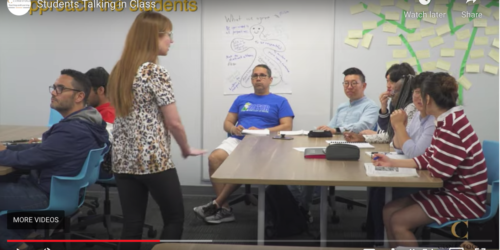
Lori Martin and Rene Letoile Incorporate Gamification in Brick and Stone Mason Programs

Lori Martin first taught at Conestoga in 2014. Since 2019 she has been teaching in Conestoga’s Trades and Apprenticeship, specifically in the Masonry Apprenticeship and Construction Techniques Multi-Trade programs. Lori brings with her 12 years as a Red Seal Mason, including valuable experience as a foreman. She enjoys working with future masons, helping them develop necessary skills, from hands-on construction to trades math and print reading. She is also passionate about introducing people to masonry and having people try it out.

Rene Letoile has been a mason since 2000 and a professor at Conestoga College since the start of the masonry program in 2008. He has also been its program coordinator since the beginning. Rene has volunteered with Skills Ontario since 2009 as a co-chair of the brick competition, and started with Skills Canada in 2016, representing Ontario as a National Technical Committee member assisting in coordinating the Bricklaying Competition. In 2019, Rene applied for the role of expert representing Canada at the World Skills event in Russia, and is currently the Canadian expert at World Skills for the competition next year in Lyon, France.
Rene Letoile and Lori Martin, professors in Conestoga’s Brick and Stone Mason programs, use gamification techniques to engage students in active learning and comprehension checks. After relying on Kahoot for years, Lori and Rene recently switched to Mentimeter, to which students have responded positively.
Rene teaches basic theory and math courses in the Construction Techniques (Welding, HVAC, Plumbing, and Masonry) and Construction Techniques (Masonry, Plumbing, Electrical, and Carpentry) programs, and Lori teaches masonry preparation, theory, and brick-and-stone practice in the same programs.
Using Mentimeter to Prepare Students for Careers in the Trades
“I try to tie Mentimeter’s features into situations that students will encounter as masons and multi-tradespeople,” said Rene. “If students go for Red Seal Certifications, their tests will be multiple choice, so I replicate that by using Mentimeter’s quiz feature. Students will remember their answers to the questions and learn from them as they progress in the course.”

Since transitioning to Mentimeter, Rene has used the platform’s quiz feature similarly to Kahoot so students still feel a sense of light competition when preparing for assignments and exams. For example, if Rene teaches a unit on building codes, he will ask students to answer a Mentimeter question on clearances and numbers going along with these codes, just as they would in a workplace setting or preparing for their red seal certifications.
Rene sometimes gives students prizes, like a new tape measure or t-shirt from a trade show, if they score high on Mentimeter quizzes.
“Having open communication in the classroom makes students feel comfortable asking and answering questions,” advises Rene. “When reviewing for exams, I’ll divide students into teams and play Jeopardy, where they collaborate to respond. They will collaborate with others on job sites, so these activities prepare them for that.”

Reaching All Students Through Multiple Modalities
“In class, there may be two students who feel comfortable answering a lot of questions verbally,” says Lori. “To make sure I reach all students who may want to answer questions non-verbally, I’ll also set up Mentimeter quizzes so students can show, in their own way, that they’ve learned the material. Each student responds differently, so we provide multiple methods to check their learning and engage them. Another method I use is to ask students to put their thumbs up or down so I know if they’ve fully understood a concept.”
Some of Lori’s classes focus on the theory behind the trades and hands-on crafts, so she introduces lessons with PowerPoint slides. Since students have varying levels of experience with topics or the tools they learn, Lori brings the actual tools to class for students to understand how they’re used on the job.
Her shop classes typically lead to an example of what students will learn or build together. After a brief demonstration of what students should do, they are divided into groups to work on these projects for most of the class time.
Rene and Lori’s advice to faculty is to implement gamification, such as Mentimeter or Jeopardy, whenever it would be effective so students can answer questions and contribute to activities anonymously and comfortably. They’ve also granted students choice in how they’d like to approach assignments. Both professors call this the “builder’s choice.”







